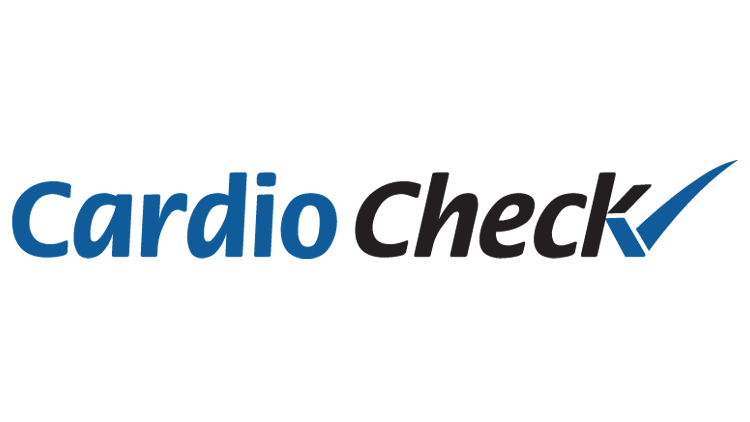Description
Seeing the Bigger Picture for Heart Health
The Cardio Check Profile is an advanced blood assessment of lipids and cardiometabolic analytes providing insight regarding independent risk. Combining the best of conventional and functional laboratory biomarkers, the profile evaluates cholesterol and triglyceride levels, as well as targeted apolipoproteins, important ratios, high sensitivity CRP, and homocysteine. Clinicians can take a broader look at a patient’s cardiac health to develop targeted therapeutic strategies.
When should testing with the Cardio Check be considered?
Atherosclerotic cardiovascular disease (ASCVD) begins in childhood, manifesting as disease later in life.1 According to the World Health Organization, heart disease and stroke are the leading causes of death globally.2 Recommendations for cardiac screening with a standard lipid panel varies between expert organizations, with some recommending screening as early as 20 years old. Patients with one or more risk factors may have more frequent screening and have their first test at a younger age.3
Cardiovascular risk factors include:4
- Increasing age
- Family history of early cardiovascular disease
- High cholesterol from a prior test
- High blood pressure
- Diabetes or prediabetes
- Overweight or obese
- Smoking cigarettes
- Unhealthy diet
- Not enough physical activity
What advantage does the Cardio Check offer compared to other diagnostics?
The standard lipid panel is often the only laboratory markers a clinician will order to assess cardiovascular risk. However, an earlier article published in the New England Journal of Medicine stated that,although hypercholesterolemia is important in approximately 50 percent of patients with cardiovascular disease, other factors need to be taken into consideration. Atherosclerosis is clearly an inflammatory disease and does not result simply from the accumulation of lipids.5Numerous studies have been published on multiple valuable markers of risk assessment. It is clear that advanced cardiovascular panels may provide more clinical insight and help tailor therapies.6,7 The Cardio Check offers both conventional and functional laboratory biomarkers for a more complete picture of risk to guide therapeutic strategies.
The Cardio Check Biomarkers
The biomarkers on the Cardio Check are arranged as follows (see sample report for individual analytes):
- Lipids
- LDL-C (low density lipoprotein) is the form of cholesterol that can deposit in plaques (“bad cholesterol”) and is the primary target of cholesterol-lowering therapy
- HDL-C (high density lipoprotein) promotes reverse cholesterol transport, carrying LDL cholesterol away from the arteries and back to the liver to be excreted as bile (“good cholesterol”)
- Triglycerides (TG) are the most common type of fat in the body and store excess energy from the diet – well-established marker of CVD risk
- Total Cholesterol (TC) includes LDL, VLDL, and HDL cholesterol and levels correlate with atherosclerotic CVD
- Lipid Ratios: Multiple epidemiological studies have shown that lipoprotein ratios have a greater correlation with CVD and are better predictors than individual lipid measurements8
- TC/HDL Ratio predicts the formation of coronary plaques and coronary heart disease; the higher the ratio, the greater the risk for developing atherosclerosis8-10
- TG/HDL Ratio has been shown to predict both metabolic and cardiovascular risk and is associated with insulin resistance8
- Apolipoproteins
- Apo A-1 is the main structural component of HDL and assists in reverse cholesterol transport (HDL is “good cholesterol”)
- Apo B is the main component of atherogenic lipoprotein particles, i.e. LDL, Lp(a), and others (LDL is bad cholesterol); Apo B is a stronger indicator of atherogenicity than LDL-C alone11,12
- Apo B/Apo A-1 Ratio has been shown in multiple studies to have a higher predictive ability for metabolic syndrome, CVD, obesity, insulin resistance, diabetes, MI, and early atherosclerosis as compared to standard lipid evaluations13-18
- Lp(a) is a type of lipoprotein that is primarily genetically determined and causes damage via inflammation and oxidative stress
- Cardiometabolic Markers
- hsCRP is an inflammatory marker
- Homocysteine is part of the methylation pathway and is toxic to the endothelium contributing to damage and atherosclerosis
What can clinicians and patients expect from the Cardio Check Profile?
The Cardio Check Profile offers clinically actionable biomarkers that help clinicians to more clearly be able to stratify risk and intensity of therapeutics. By offering additional markers beyond the standard lipid panel, clinicians may select additional therapeutics or lifestyle changes to minimize overall risk based on results.
Genova’s Methodology
Serum apolipoproteins and hsCRP are measured via immunoturbidimetric. Serum lipids are measured via enzymatic. Homocysteine is via immunoassay.


